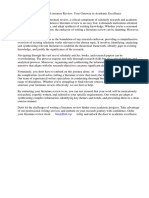0 ratings0% found this document useful (0 votes)
30 viewsHow To Be An Architecture
How To Be An Architecture
Uploaded by
Nilay NabibayliAn architect plays a significant role in shaping the built environment by designing functional and aesthetically pleasing buildings and spaces. As the mastermind behind spatial designs, an architect is responsible for ensuring their designs meet client requirements, building codes, and are structurally sound. They also consider environmental impacts and work closely with other professionals during construction. Successful architects have strong communication and problem-solving skills, and expertise in technologies like CAD and BIM.
Copyright:
© All Rights Reserved
Available Formats
Download as PDF, TXT or read online from Scribd
How To Be An Architecture
How To Be An Architecture
Uploaded by
Nilay Nabibayli0 ratings0% found this document useful (0 votes)
30 views3 pagesAn architect plays a significant role in shaping the built environment by designing functional and aesthetically pleasing buildings and spaces. As the mastermind behind spatial designs, an architect is responsible for ensuring their designs meet client requirements, building codes, and are structurally sound. They also consider environmental impacts and work closely with other professionals during construction. Successful architects have strong communication and problem-solving skills, and expertise in technologies like CAD and BIM.
Original Title
How to be an Architecture
Copyright
© © All Rights Reserved
Available Formats
PDF, TXT or read online from Scribd
Share this document
Did you find this document useful?
Is this content inappropriate?
An architect plays a significant role in shaping the built environment by designing functional and aesthetically pleasing buildings and spaces. As the mastermind behind spatial designs, an architect is responsible for ensuring their designs meet client requirements, building codes, and are structurally sound. They also consider environmental impacts and work closely with other professionals during construction. Successful architects have strong communication and problem-solving skills, and expertise in technologies like CAD and BIM.
Copyright:
© All Rights Reserved
Available Formats
Download as PDF, TXT or read online from Scribd
Download as pdf or txt
0 ratings0% found this document useful (0 votes)
30 views3 pagesHow To Be An Architecture
How To Be An Architecture
Uploaded by
Nilay NabibayliAn architect plays a significant role in shaping the built environment by designing functional and aesthetically pleasing buildings and spaces. As the mastermind behind spatial designs, an architect is responsible for ensuring their designs meet client requirements, building codes, and are structurally sound. They also consider environmental impacts and work closely with other professionals during construction. Successful architects have strong communication and problem-solving skills, and expertise in technologies like CAD and BIM.
Copyright:
© All Rights Reserved
Available Formats
Download as PDF, TXT or read online from Scribd
Download as pdf or txt
You are on page 1of 3
How to be an Architecture
Understanding the Role of an Architect in Designing Spaces
Architecture is a multidisciplinary field that combines art, science, and engineering to design functional
and aesthetically pleasing spaces. As the mastermind behind the creation of buildings and other physical
structures, an architect plays a significant role in shaping the built environment. The architect's role in
designing spaces goes beyond conceptualizing and sketching designs. They are responsible for ensuring
that the designs meet the client's requirements, comply with building codes and regulations, and are
structurally stable. An architect must also consider the environmental impact of their design and ensure
that it is sustainable. Additionally, they work closely with engineers, contractors, and other professionals
involved in the construction process to ensure the design is implemented as planned. Successful architects
possess excellent communication skills, are creative, analytical, and detail-oriented.
2. Developing Essential Skills for a Successful Career in Architecture
Developing essential skills is critical for a successful career in architecture. One important skill is the
ability to communicate effectively. As an architect, you will be collaborating with a diverse group of
individuals including clients, engineers, contractors, and other professionals. Therefore, being able to
communicate your ideas clearly and concisely is essential. Another important skill is the ability to think
critically and present creative solutions. As an architect, you will be faced with complex design challenges
requiring innovative solutions, and being able to think outside the box will give you an edge in the industry.
Additionally, expertise in digital technologies such as CAD (computer-aided design) and BIM (building
information modeling) is crucial in today's architecture industry. These technologies streamline the design
process, allowing architects to create more efficient and accurate models. Mastering these essential skills
will help you stand out in a competitive architecture job market and build a successful career.
3. Navigating the Education and Licensing Requirements for Architects
Navigating the education and licensing requirements for architects is a complex process. Architects must
complete a rigorous educational program that typically includes a five-year Bachelor of Architecture
degree followed by an internship period, during which time they gain practical experience under the
supervision of a licensed architect. After completing their internship, architects must pass a series of
licensing exams, including the Architect Registration Examination, in order to practice independently.
Additionally, to maintain their license, architects must participate in continuing education programs
to keep their skills and knowledge up to date. While the requirements for becoming an architect can
be demanding, the rewards are significant for those who are able to navigate the process successfully.
Architects are highly respected professionals who play a crucial role in shaping the built environment
and improving the quality of life for people in their communities.
4. Staying Relevant and Innovative in the Ever-Changing Field of Architecture
In the ever-evolving field of architecture, it is crucial to stay relevant and innovative to remain competitive.
Keeping abreast of emerging trends and technologies is one way to stay ahead of the curve. Architects must
continuously educate themselves regarding new materials, construction techniques, and design theories
that have the potential to meet the needs of clients and the environment. Adaptability and flexibility are
also key to staying relevant in architecture. This involves being able to pivot designs as project parameters
change and adapting to new design challenges. Embracing interdisciplinary collaboration with other
professionals, such as engineers and sustainability consultants, also contributes to staying relevant in
architecture. Ultimately, a willingness to continuously learn, adapt, and stay updated on emerging trends
is necessary to stay ahead of the curve and innovate in the field of architecture.
Bibliography
- Dave Hendricksen. '12 More Essential Skills for Software Architects.' Addison-Wesley Professional,
8/22/2014
- Mark Karlen. 'Space Planning Basics.' John Wiley & Sons, 9/20/2011
This essay was written by Samwell AI.
https://samwell.ai
You might also like
- Arc 048 RSWDocument24 pagesArc 048 RSWPrescilo Nato Palor IVNo ratings yet
- Professional Studies 5 Questainaire AssignmentDocument7 pagesProfessional Studies 5 Questainaire AssignmentMadhurya MSNo ratings yet
- PUP BMA 2 HW14 BADEL Jamie Rose E.Document3 pagesPUP BMA 2 HW14 BADEL Jamie Rose E.Jamie Rose BadelNo ratings yet
- Architects Design New BuildingsDocument7 pagesArchitects Design New BuildingsfirdousNo ratings yet
- Careers Bulletin 27th November 2023Document11 pagesCareers Bulletin 27th November 2023Satvik SatuNo ratings yet
- Brochure Application Form For Specialist Diploma in M e CoordinationDocument6 pagesBrochure Application Form For Specialist Diploma in M e CoordinationMa ArullandhuNo ratings yet
- Construction ProfessionalsDocument8 pagesConstruction ProfessionalschristopherNo ratings yet
- Architect Course WorkDocument7 pagesArchitect Course Workafazapfjl100% (2)
- Assignment DR Mimi 25523Document2 pagesAssignment DR Mimi 25523sun_ardyNo ratings yet
- Additional - Questions Application DBD 2023 2024Document2 pagesAdditional - Questions Application DBD 2023 2024maaz13138No ratings yet
- Duties of Engineering WorkDocument3 pagesDuties of Engineering WorkmadhNo ratings yet
- Design Team NotesDocument16 pagesDesign Team NotesGerald MagomaNo ratings yet
- Activity1 - DA - Swot AnalysisDocument3 pagesActivity1 - DA - Swot AnalysisMarken NovelNo ratings yet
- Careers in Architecture ProfessionDocument5 pagesCareers in Architecture ProfessionIqRa JaVedNo ratings yet
- ResearchDocument5 pagesResearchChris Herbert SibalNo ratings yet
- Professional Practice - Unit 1 - Part - 1Document13 pagesProfessional Practice - Unit 1 - Part - 1Samudrala SreepranaviNo ratings yet
- Analysis of Commercial Building Using EtabsDocument37 pagesAnalysis of Commercial Building Using Etabssuhithbadami100% (2)
- Responsibility of The Architect in Construction ResearchDocument4 pagesResponsibility of The Architect in Construction ResearchDave Brendan Kyle DagatanNo ratings yet
- PUP BMA 2 HW13 BADEL Jamie Rose E.Document2 pagesPUP BMA 2 HW13 BADEL Jamie Rose E.Jamie Rose BadelNo ratings yet
- The ChatDocument11 pagesThe Chatbiruk tadeleNo ratings yet
- Finals Individual Output No. 1 - Funtelar, Mary Aujhen M - 4EDocument3 pagesFinals Individual Output No. 1 - Funtelar, Mary Aujhen M - 4EAujhen FuntelarNo ratings yet
- Class Note Onstruction Engineer.Document4 pagesClass Note Onstruction Engineer.ray anne palenciaNo ratings yet
- Thesis For Construction Management IdeasDocument4 pagesThesis For Construction Management Ideasfjcxm773100% (2)
- The Role of The Architect: Rchitecture EsourcesDocument8 pagesThe Role of The Architect: Rchitecture EsourcesdaffnyNo ratings yet
- Design For Excellence and Contracting DesignDocument35 pagesDesign For Excellence and Contracting Design12483.2020No ratings yet
- Course Eeci 5291Document47 pagesCourse Eeci 5291Brian ObumbaNo ratings yet
- What Does An Architectural Technologist DoDocument2 pagesWhat Does An Architectural Technologist DoprincesspartytenerifeNo ratings yet
- Quiz MTDocument3 pagesQuiz MTkhalid alshamsiNo ratings yet
- Architectural Education in IndiaDocument5 pagesArchitectural Education in IndiaPrakash ApteNo ratings yet
- 1stweekIntroductionCM Construction ManagementDocument44 pages1stweekIntroductionCM Construction ManagementMukhammadjonNo ratings yet
- 1ASDocument7 pages1ASAshish VargheseNo ratings yet
- Attributes of An Engineer - SandeepDocument4 pagesAttributes of An Engineer - Sandeepsaiabhijeet55155No ratings yet
- BMA 1 HW#3.1 GUERRERO, RonneLouiseDocument5 pagesBMA 1 HW#3.1 GUERRERO, RonneLouiseLoisaDu RLGNo ratings yet
- ARCH492 Session 2Document16 pagesARCH492 Session 2Jay-r MiñozaNo ratings yet
- What Is ArchitectureDocument2 pagesWhat Is ArchitectureLilly RamadanNo ratings yet
- Qualities of A Great Civil EngineeringDocument3 pagesQualities of A Great Civil EngineeringINOJOSA Marc Ezekiel Robin I.No ratings yet
- De SAGUN The Perceived Effect of Technological Advancements in The Architectural Sector Over The YearsDocument7 pagesDe SAGUN The Perceived Effect of Technological Advancements in The Architectural Sector Over The YearsEphraim Joshua De SagunNo ratings yet
- Tve 106Document2 pagesTve 106Sebastian LopecilloNo ratings yet
- Job Description, Salaries and BenefitsDocument9 pagesJob Description, Salaries and BenefitsAlvin HallarsisNo ratings yet
- What Is Construction EngineeringDocument6 pagesWhat Is Construction EngineeringSam SamNo ratings yet
- How Construction Engineering Management Will Enhance My Contribution To Zambia'S Development by Moyo MacdonaldDocument5 pagesHow Construction Engineering Management Will Enhance My Contribution To Zambia'S Development by Moyo MacdonaldMacdonald MoyoNo ratings yet
- Civil Engineering Basics Skill To Become A Successful Civil EngineerDocument9 pagesCivil Engineering Basics Skill To Become A Successful Civil EngineerIqbal Baig100% (1)
- Civil Eds PresentationDocument19 pagesCivil Eds Presentationayomide.akanjiNo ratings yet
- Project Teams and RolesDocument3 pagesProject Teams and RolesAbdulrauf MacatampoNo ratings yet
- Job Description Stantec IDocument2 pagesJob Description Stantec Ibilal10alshalNo ratings yet
- Prop RacDocument3 pagesProp RacJomari FerrerNo ratings yet
- Seven X 2 14 Habits of Highly Effective Technology ArchitectsDocument3 pagesSeven X 2 14 Habits of Highly Effective Technology Architectsapi-25906202No ratings yet
- Rchitect: Tasks Skills and CompetenciesDocument1 pageRchitect: Tasks Skills and CompetenciesNinoy C CarranzaNo ratings yet
- Group English: Anindyar Yunira A.P (190523648082) Adellin Nur Ristasari (190523648077) Dinda Alya Aqilah (190523648148)Document6 pagesGroup English: Anindyar Yunira A.P (190523648082) Adellin Nur Ristasari (190523648077) Dinda Alya Aqilah (190523648148)Adellin NRNo ratings yet
- Building Drwawing and Cadd Note M IIDocument55 pagesBuilding Drwawing and Cadd Note M IIStephen KaranNo ratings yet
- Design Department Proposal With BDes For CommentsDocument85 pagesDesign Department Proposal With BDes For CommentsfhreankNo ratings yet
- Architect RoleDocument9 pagesArchitect RolekarolmituraNo ratings yet
- Final EssayDocument8 pagesFinal Essayapi-388841477No ratings yet
- Marketing Strategies For ArchitecturalDocument5 pagesMarketing Strategies For ArchitecturalDSCM131165No ratings yet
- How to Present an Interior Design Project: A Comprehensive Guide to Presenting Interior Project to ClientsFrom EverandHow to Present an Interior Design Project: A Comprehensive Guide to Presenting Interior Project to ClientsNo ratings yet
- The Engineer’s Guide to Project Management: Practical Strategies for SuccessFrom EverandThe Engineer’s Guide to Project Management: Practical Strategies for SuccessNo ratings yet
- Architect Skills and Qualities: Guide to Becoming a Good ArchitectFrom EverandArchitect Skills and Qualities: Guide to Becoming a Good ArchitectNo ratings yet
- Brigada Eskwela Pworkplan: Francisco Oringo Sr. Elementary SchoolDocument3 pagesBrigada Eskwela Pworkplan: Francisco Oringo Sr. Elementary SchoolPrecilla HalagoNo ratings yet
- Entrance Exam - Outside SaranganiDocument5 pagesEntrance Exam - Outside SaranganiAriel LalisanNo ratings yet
- The Spirit Sept 07Document12 pagesThe Spirit Sept 07Erlinda Rillo BlevinsNo ratings yet
- Aim Literature ReviewDocument7 pagesAim Literature Reviewc5g10bt2100% (1)
- System For Question Paper Generation Using Randomization AlgorithmDocument8 pagesSystem For Question Paper Generation Using Randomization AlgorithmAnwar Akther ValiNo ratings yet
- North Western Province Grade 8 English 2019 2 Term Test Paper 61efd291362e2Document7 pagesNorth Western Province Grade 8 English 2019 2 Term Test Paper 61efd291362e2dewika Wickramarathne100% (1)
- June 2010 (v1) MS - P3 CIE Maths A-LevelDocument6 pagesJune 2010 (v1) MS - P3 CIE Maths A-LevelZi QianNo ratings yet
- Nuames Senior Portfolio Letter of Recommendation Personal Data FormDocument3 pagesNuames Senior Portfolio Letter of Recommendation Personal Data Formapi-487726278No ratings yet
- Writing An AbstractDocument5 pagesWriting An AbstractVivi DwiyaniNo ratings yet
- Career GuidanceDocument1 pageCareer GuidanceMaricon ElardoNo ratings yet
- Examples of AccommodationsDocument3 pagesExamples of AccommodationsPamela LagunaNo ratings yet
- Introduction To Media and Information LiteracyDocument13 pagesIntroduction To Media and Information LiteracyJoiemmy Sumedca Bawengan GayudanNo ratings yet
- NumeracyDocument12 pagesNumeracySerah BijuNo ratings yet
- Script SSCT Retreat TeambuildingDocument10 pagesScript SSCT Retreat TeambuildingEDMAR POLVOROZA100% (1)
- The Aman Foundation Internship ProgramDocument4 pagesThe Aman Foundation Internship ProgramدانيالراشدNo ratings yet
- Shelby Completed ResumeDocument2 pagesShelby Completed Resumetele645408No ratings yet
- A Detailed Lesson Plan in ScienceDocument7 pagesA Detailed Lesson Plan in SciencePaulo CelisNo ratings yet
- Team 6 - Laboratory ReportDocument7 pagesTeam 6 - Laboratory Reportjamesdlcrz07No ratings yet
- Cooperation Games Unit Plan: 5 GradeDocument51 pagesCooperation Games Unit Plan: 5 Gradeapi-341708040No ratings yet
- e-Education:Digital Initiatives in India: Dr. Pathloth OmkarDocument31 pagese-Education:Digital Initiatives in India: Dr. Pathloth OmkarDhaswanthNo ratings yet
- Dronacharya-Ii-2024-Sample Paper-Class-X-P1-I.q.Document10 pagesDronacharya-Ii-2024-Sample Paper-Class-X-P1-I.q.Baibhav KumarNo ratings yet
- Applied Acoustics: Özkan - InikDocument25 pagesApplied Acoustics: Özkan - InikCode BugMxNo ratings yet
- MMW MidtermDocument4 pagesMMW MidtermJay PauloNo ratings yet
- Characteristics of An Effective Thesis StatementDocument6 pagesCharacteristics of An Effective Thesis StatementAlona CaminoNo ratings yet
- Cambridge Assessment International Education: Accounting 0452/21 May/June 2018Document18 pagesCambridge Assessment International Education: Accounting 0452/21 May/June 2018IG UnionNo ratings yet
- Back To Basics Is Not Our Education Cure Its Where Weve Gone WrongDocument4 pagesBack To Basics Is Not Our Education Cure Its Where Weve Gone WrongTim GadenNo ratings yet
- List of Permitted ASU Colleges 2019Document19 pagesList of Permitted ASU Colleges 2019Arvind LalNo ratings yet
- How To Write German NumbersDocument7 pagesHow To Write German NumbersbinodthakurNo ratings yet
- Govt College For Women Islampura, Lahore.: Psychology Part-I December Tests 2016Document2 pagesGovt College For Women Islampura, Lahore.: Psychology Part-I December Tests 2016Farah VirkNo ratings yet
























































































